Chapter 11 Chapter 11 "Wazi" and "Shehuo" in the Song Dynasty
When Daqu songs and dances in the Song Dynasty were popular in the court and the upper class with their extravagance and extravagance beyond their predecessors, the common people in the cities and countryside of the Song Dynasty were also arranging their own things.
During the Northern Song Dynasty and the Southern Song Dynasty, China's agriculture, handicraft industry and commerce all made progress and development. In the north and south, some cities with developed transportation, large population and prosperous industries appeared.In Bianjing, Lin'an, Wenzhou, Quanzhou and other cities, due to the prosperity of the commodity economy, many "guilds" have emerged, and the entertainment industry has also produced guilds.For example, those who perform zaju are called "Crimson Society", those who sing are called "Yunshe", those who play puppets are called "Bao Laoshe", and those who play football are called "Yuanshe".Due to the prosperity of the entertainment industry, fixed and perennial entertainment venues have appeared in the city, called "Wazi", also known as "Washi", "Washe" and "Wasi".The place surrounded by railings in Wazi is called "goulan" for special performances.
There are more than 50 large and small Goulan in the south of Bianjing Street in the Northern Song Dynasty.There are also "playing sheds" such as lotus sheds, yaksha sheds, and elephant sheds. The largest one can accommodate thousands of people to watch.There were more than 20 tiles in Lin'an City in the Southern Song Dynasty, of which the North tile was the largest, with 13 hooks.
With these commercial entertainment venues that are not afraid of wind, rain, cold and heat, performers from all walks of life have the opportunity to perform all year round.Artists from all walks of life gather together to perform, and they can learn from and observe each other.In addition to the entertainers performing in Wazi, there are also some wandering entertainers performing on the streets or squares, they are called "Luqi people".
There were dozens of entertainments in Wazili in the Song Dynasty.There are zaju, acrobatics, shadow puppetry, puppets, rap, sumo wrestling, and many dance events, such as Wuxuan, Wufanle, Datou, flower drum, sword dance, sword dance, judge dance, dance dance, etc. Man cards, fluttering flags, fluttering butterflies, etc.
In addition to various professional artists and Lu Qi people performing in Wazi, there were also a large number of amateur song and dance troupes in the Song Dynasty, active in the vast world of cities and villages.
Folk dances in the Song Dynasty inherited the tradition of folk songs and dances since the Tang Dynasty.Every festival, professional and amateur entertainers form a huge "dance team" and take to the streets to perform in parades.Sometimes it is necessary to put up lights and festoons in lively places, and set up "terraces" and "music sheds".Buddhist and Taoist temples have always been playgrounds for the masses.There are grand Kabuki performances in festival temple fairs.
The Song Dynasty folk dance troupe was called "Shehuo".This name has been used to this day.
Shehuo in the Song Dynasty was generally held on the "birthday of the gods" - the birthday of the gods.There are many folk ancestral temples, and the birthdays of the gods are frequent, so the social fire performances are endless all year round.According to Wu Zimu's "Meng Liang Ling" records:
On the third day of February, Emperor Zitong's birthday, officials in Sichuan and Shu came to watch and build the meeting.March 28th is Dongyue's birthday.On the sixth day of April, the birthday of the City God.On the eighth day of February, Huoshan Zhang Zhenjun’s Christmas.On the eighth day of the fourth lunar month, all societies will celebrate the Buddhist meeting of the five kings.September 29th is the birthday of the Five Kings.Every time God's Christmas Day comes, every household in the market will have different offerings from the society.
In fact, Shehuo happens almost every month, and it reaches its climax on the night of Lantern Festival.At that time, every house will be lit up, everyone will go out, and there will be a variety of dramas.As Xin Qiji said in his poems, "Dongfeng puts flowers and thousands of trees at night", "fish and dragon dance overnight".The Song Dynasty government supported the Shehuo Dance Team and wanted to "distribute money and wine to reward them".
The program performed by the Shehuo Dance Team is very rich.According to the records of "Mengliang Lu", there are "Qingyin, Suyun, Luodao, Bao Lao, Hu Nu, Liu Gun, Qiao Sanjiao, Qiao Yingjiu, Qiao's marriage, Jiao Haetjiaer, ladies, pestle songs, Zhu Guo Chao, Zhumaer, Muradale, Shengui, Shi Zhailang, each company has no less than a dozen."There are also "Qiao's family, dry dragon boat, old Bao who kicked the lamp, camel elephant club" and so on. "Old Stories of the Martial Arts" even offered 71 titles of the Shehuo Dance Team.From the numerous titles, we can know that the Shehuo Dance Troupe in the Song Dynasty was mainly organized by the leaders of the "communities", who dressed up as various social characters for funny fun, including moving song and dance performances.
Hong Kong Zhao Congyan and his wife have a "Yuan Dynasty Lantern Play Picture" in their collection.It is the work of Zhu Yu, a court painter in Lin'an during the Baoyou period in the late Southern Song Dynasty.The painting is a fire dance team of the Lantern Festival in Lin'an City.
Most of Shehuo's programs have been performed in Wazi, and some of the dance programs have a long history.
"Village Music" is a group dance of various characters dressed up in the countryside.In the Palace Museum in Beijing, there is a picture of "The Great Nuo" made by the court painters of the Southern Song Dynasty.In fact, the painting is not the Nuo dance, but the Shehuo dance team.There are 12 dancers, all dressed as farmers.Some have dustpans (ben 本) on their heads, brooms in their hands, water ladles and cooking brooms on their waists; some are holding a big melon; some are wearing bamboo hats; ; Some hang turtle shells, snail shells, and clam shells.These costumes and props are all related to the countryside, and they are probably the "Mura Tianle" that wishes good weather.
"Dragon Boat" is also called "Dragon Boat".There have been performances in the Tang Dynasty, and the "Dragon Boat" in the Song Dynasty imitates the appearance of a dragon boat race on flat ground.
"Bao Lao Dance" is a funny dance in which people wear masks and imitate puppets.According to literature records, in the Southern Song Dynasty, there were more than 300 people from Bao Lao No. 1 Society in Fujian, and more than 100 people from Sichuan Bao Lao.

Figure 31 Zhu Yu of the Southern Song Dynasty, "The Lantern Show of the Yuan Dynasty"
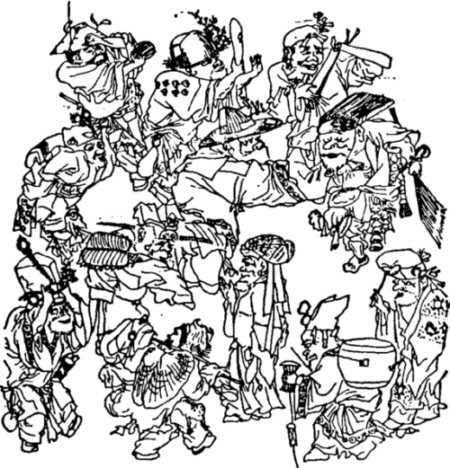
Figure 32 Song Wuming's "The Great Nuo Picture"
"Playing with the Monk" is also "The Big-Headed Monk".The performer wears a "socket" and pretends to be a monk.There is also a woman performing together, who has a certain plot, called "Big Head Monk Du Liucui".Later, in the Ming and Qing Dynasties, it became a popular program among folk societies.Up to now, this program still exists during the God Welcome Competition in Yanbei District, Shanxi Province.
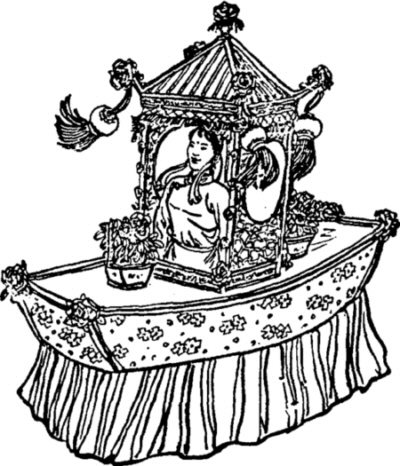
Figure 33 dry boat
"Sword Dance" and "Machete Dance" are dances developed from martial arts.There was a famous sword dance in the Tang Dynasty, and there was also a sword dance in Song Daqu.This is a show that is often performed in Wazi.
"Wu Man Pai" is also a kind of martial dance.The barbarian is the shield.In the Song Dynasty, it was often performed by more than 100 sergeants with "light and healthy make-up".Some held flags, others held pheasant tails, barbarian cards, and wooden knives. They wanted to change into various formations such as opening the door, seizing the bridge, and closing the moon, as well as fighting and assassinating performances.This kind of dance can be traced back to the "Ganqi Dance" in ancient times.Up to now, there are still "shield dance" and "vine board dance" among the people.
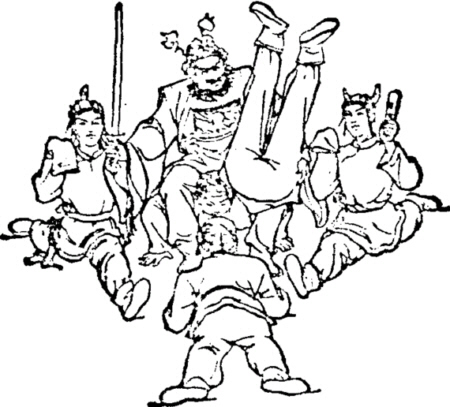
Figure 34 Jumping Zhong Kui
"Dancing Judgment" is also called "Jumping Zhong Kui".Legend has it that Zhong Kui was originally beautiful, but when he strayed into the Yin Mountain during the Taoist examination, he became very ugly.Seeing that he was ugly, the emperor disqualified him from being the number one scholar.In a fit of rage, Zhong Kui touched himself to death.After his death, the Jade Emperor saw that he was honest and upright, and appointed him as a judge, who was in charge of exorcising evil spirits.Zhong Kui can kill and eat ghosts.The judge dancers in the Song Dynasty had to wear masks, fake beards, green robes, and boots, and held the "slips" used by officials to record and write when they went to court.Someone beats a small gong to greet each other, and dancers perform to the sound of the gong.This dance was absorbed by opera and became a stylized dance when judges appeared on stage.
"Fighting the Flag" is about a man wearing a red turban dancing a big flag.Sometimes it is holding two white flags in hand, "jumping and dancing in the whirlwind".Nowadays, when performing water battles or land battles in opera, there is also a performance of fluttering flags.The flags are dancing, and people are jumping and rolling among the flags, rendering a warm atmosphere.
"Flower Drum" is playing waist drum.Flower drums in the Song Dynasty were often performed by hundreds of people.Su Shi said in a poem that "a waist drum with a hundred faces is like spring thunder", and Lu You also said "a waist drum with a hundred faces is like spring thunder", which is magnificent.Now the waist drums all over China are related to the flower drums of the Song Dynasty.
"Bamboo Horse" is about running a bamboo horse.In the beginning, it may have been a game for children to ride a bamboo pole as a horse. This kind of performance already existed in the Han Dynasty.Later, it developed into a dancer with a horse tied around his waist - the horse's head tied in front of the waist, and the horse's buttocks tied behind the waist.During the performance of Zaju in the Yuan Dynasty, it was used to show the battle between the two armies against horses.Now "Running Donkey" in Hebei, Shandong and other places, and "Bamboo Horse Lantern" in various places in the south, etc., are all related to the bamboo horses of the Song Dynasty.
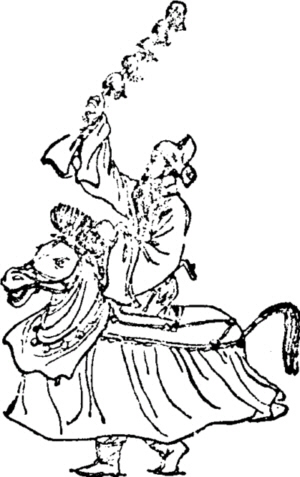
Figure 35 Bamboo Horse
"Lion Dance" has been recorded in the Three Kingdoms period, and there was "Five Fang Lion Dance" in Tang Dynasty.In the "Hundred Sons Playing in Spring" painted by Su Hanchen in the Southern Song Dynasty, a child leads a big lion with golden eyes and silver teeth and wags its tail.This lion is dressed up by two children dressed in "lion skin".Since there are performances for children, of course there will also be performances for adults. "Lion Dance" has developed different genres in the north and south of China.
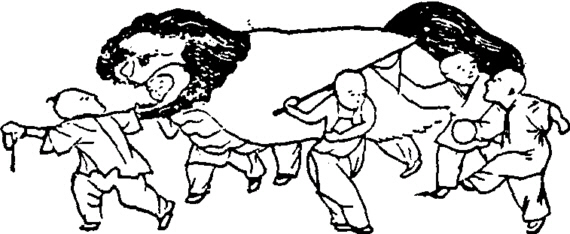
Figure 36 Su Hanchen of the Southern Song Dynasty "Hundred Sons Playing in Spring"
The Song Dynasty dance troupe represented by Shehuo established the style and scale of Chinese folk dance.After the Song Dynasty, Yuan, Ming and Qing dynasties, due to the popularization of opera art, the independent dance art in the Han area showed a tendency to decline.However, folk dance, as an important part of folk activities closely related to people's lives, has always maintained a vigorous vitality.

Figure 31 Zhu Yu of the Southern Song Dynasty, "The Lantern Show of the Yuan Dynasty"

Figure 32 Song Wuming's "The Great Nuo Picture"

Figure 33 dry boat

Figure 34 Jumping Zhong Kui

Figure 35 Bamboo Horse

Figure 36 Su Hanchen of the Southern Song Dynasty "Hundred Sons Playing in Spring"
